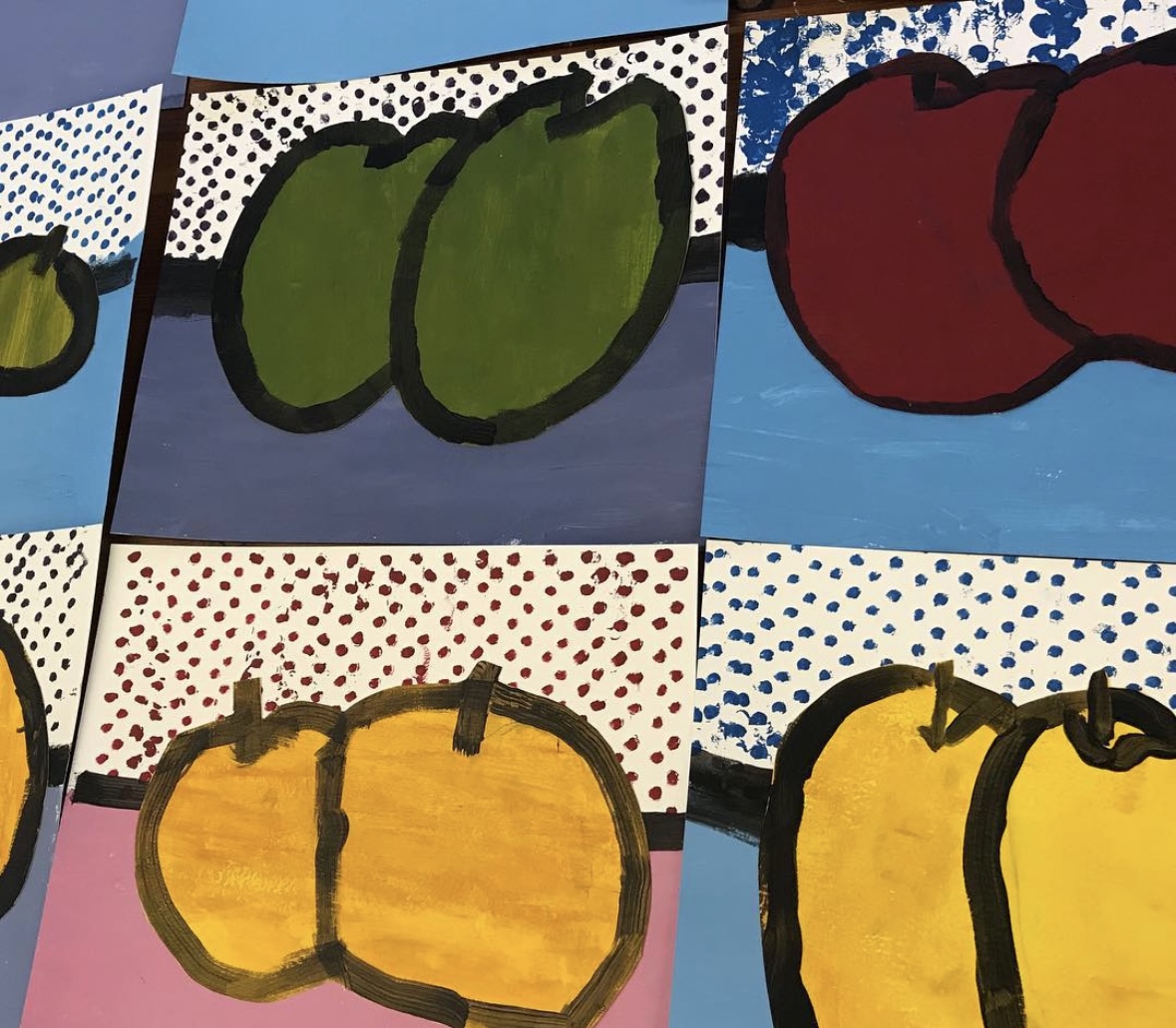
The habit of observing is habit worth developing—a habit of being.
Observation of simple objects is the best way to begin your Observation Journal—think shell, spoon, marshmallow, apple. Begin this activity in kindergarten and continue through 12th grade! Create an annual binder of student observations—The Observation Journal. These will become terrific keepsakes.
And getting started is easy as 1, 2, 3…
One.
Trace the edges with your pencil follow along with your eyes.
Two.
Begin your sketch, following the outline edges (very s l o w l y). Let your hand “see” all the curves and bumps that your eye sees as you look back and forth from your drawing to the apple. Don’t rush. Making a connection between the eyes and the hand is a slow motion exercise.
Three.
Simple observational drawings can be embellished with a wash of watercolor. Always paint from a puddle, never directly from the pigment tiles. When creating a wash of color for a red apple, Sara reminds us that the red is not the red directly from the tile. “Red in nature is complex. Make a puddle of red and add a tiny drop of green.” It’s the same process for an orange pumpkin, add drops of the complimentary color of the object into the prominent color—a splash of blue— to achieve the natural complexity of the object’s color. Here is an advanced observation where the pinecone color is actually a blend of yellow with a touch of purple!:

A good way to get your students ready for a complex observation like this pinecone, is to engage them with simple hand held objects from the kitchen to the natural world. It is also a good idea to engage students with already flattened objects as demonstrated in the photos below:


Furthermore, have students copy drawings of artist’s. This activity helps them develop observational skills and while learning how great artists use lines.


Once the observational drawing is complete, encourage your students to do some research on the object that was observed, date the entry and add it to the Observation Journal.
As students complete observations, encourage them to engage in clean-up—putting away materials and washing brushes and paint trays. Encourage them to reflect on what was gleaned. It’s likely that what was gained is far more than art, far more than science.
Developing the skill of observing is a habit of being that invites us to imagine possibility.
~Kimberly & Sara








